Confused about Jason Meade mistrial? Your questions answered about what's next and more
The trial of former Franklin County Sheriff's deputy Jason Meade that ended Friday with the jury unable to reach a unanimous verdict was unusual in several ways.
There was a surprise last-minute witness for the prosecution, and the judge declared a mistrial twice on Friday.
What was not unusual was a deadlocked jury in a trial of a law enforcement officer facing murder charges in Franklin County Common Pleas Court.
The last officer who went on trial for murder in Franklin County, former Columbus police vice officer Andrew Mitchell in the 2018 shooting of Donna Castleberry, had two trials. In Mitchell’s first trial, the jury hung, and a second jury found him not guilty last year.
While jurors were still deliberating, Mark R. Weaver, an attorney who has served as a special prosecutor in more than a dozen counties around the state, told The Dispatch this jury was likely to hang.
"The cases that bring national controversies and division into the courtroom ... no one should be surprised when the jury, which is just a representative pool of the county, divides similarly," Weaver said.
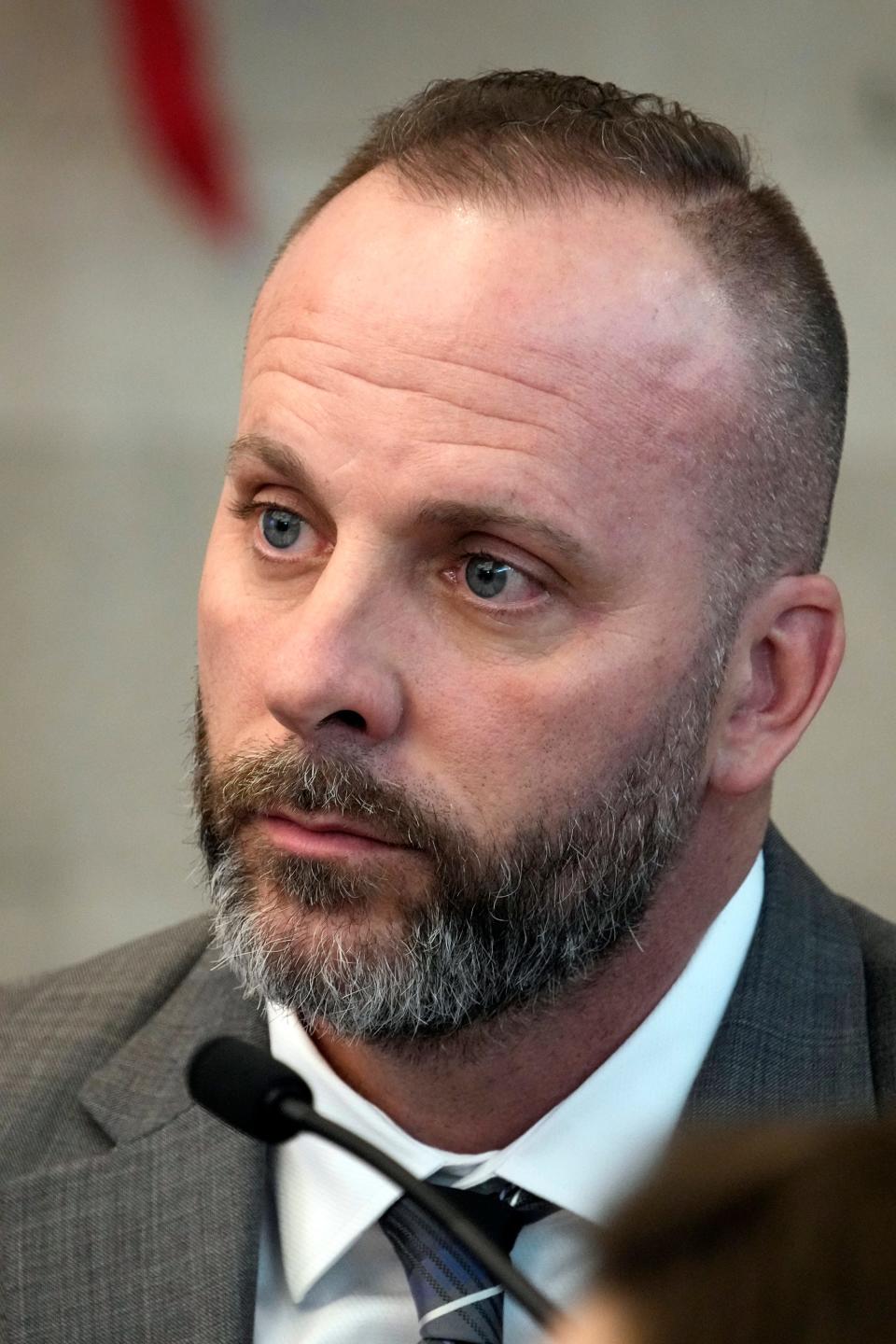
Meade, 45, has pleaded not guilty to two counts of murder and one count of reckless homicide in the fatal shooting of Casey Goodson Jr. on Dec. 4, 2020, at the side door to Goodson's residence on Estates Place in Columbus' North Linden neighborhood.
With no body camera footage, Meade is the only living eyewitness to the shooting. He testified he had to shoot when Goodson pointed a gun at him a second time.
Why were four jurors dismissed during Jason Meade trial?
Three days of rigorous jury selection preceded Meade's trial, resulting in the selection of 12 jurors and four alternates.
During the jury selection process, the special prosecutors told potential jurors this trial would last two weeks and jurors disclosed if they had scheduling conflicts in that timeframe. But after special prosecutors called a surprise witness, the trial went into a third week.
It is unknown why four jurors were dismissed. They have a right to privacy, and the reasons were not disclosed in open court. Reasons why jurors could have been dismissed mid-trial include scheduling conflicts or illness.
When the trial resumed after a break on Tuesday, Feb. 13, a juror was not present.
After the jury received the case on Wednesday afternoon, Feb. 14, jurors on three separate occasions were dismissed, and alternates seated. Each time, the judge told jurors to restart deliberations from the beginning.
Those three substitutions occurred on Wednesday as jurors were sent home for the night, Thursday afternoon and first thing Friday morning.
Why did the Jason Meade judge declare a mistrial the first time?
Throughout the different iterations of the jury, jurors sent Judge David Young notes with questions indicating they were having difficulty reaching a unanimous verdict.
They asked hypothetically if they could return a verdict on one count and be hung on another. They also asked a couple of ways if Meade could be justified on one count but not justified on the other two counts. The judge told them if they found the defendant was justified, it applied to each count.
On Friday at around 11:20 a.m., Young called the jury into the courtroom and said, "You are the hardest working jury I've ever had, but I'm going to declare a mistrial in this."
The attorneys in the courtroom appeared surprised and indicated they wanted to speak with Young in the back.
Minutes later, the attorneys and judge came back into the courtroom.
Young said he had received a question from the jurors indicating they wanted to find Meade guilty on one count and not guilty on another. Then Young set aside the mistrial and said the jury would continue deliberating.
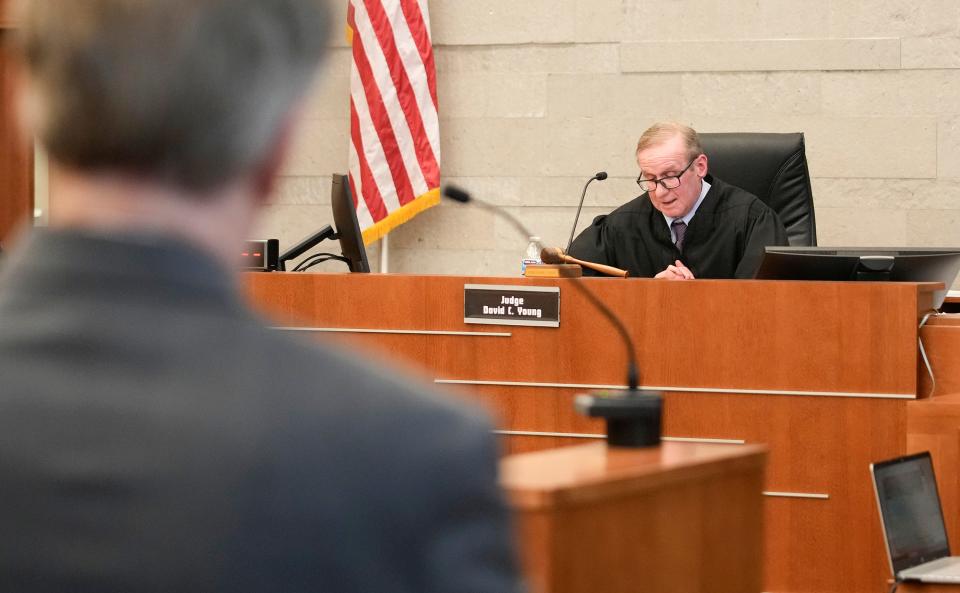
“I have never seen that happen. I have never heard of that happening, and I couldn’t find any cases researching where it has happened,” Robert Barnhart, a Capital University Law School assistant professor, told The Dispatch.
Why did the judge declare a mistrial the second time?
Around 1:40 p.m. on Friday, the jury indicated they were deadlocked and could not reach a unanimous verdict. This means at least some jurors were leaning toward guilty and some were leaning toward not guilty.
Young read them what's known as a Howard charge, essentially telling them to continue trying to reach a unanimous verdict.
It did not take long for the jury to indicate they were still hung. A few minutes after 2 p.m. Friday, Young dismissed the jurors and declared another mistrial.
What happens to Jason Meade now? Will there be another trial?
A mistrial does not mean Meade's charges go away.
Prosecutors often choose to retry a case following a mistrial. In some cases, prosecutors may reevaluate and decide to ask for a dismissal of some or all charges.
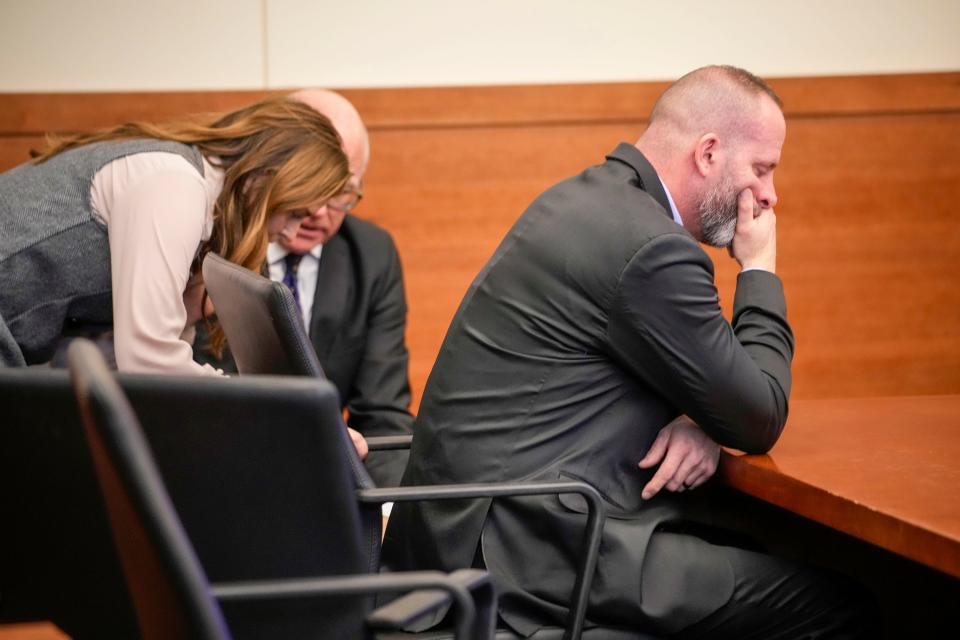
Gary Shroyer, one of the three special prosecutors, told The Dispatch on Monday that they are not ready to comment on whether they will retry the case. In an emailed statement, the special prosecutors said:
"We are disappointed that the jury did not reach a verdict. We are especially saddened for the Goodson family, who have responded so admirably to the tragic death of Casey, and their patience with the system as we strive for accountability and justice. We are mindful of the frustration that the lack of a final verdict has caused to them and the community. We are assessing our options and will have no further comment until that process is completed."
Meade remains out on the $250,000 bond he posted in December 2021 after he was indicted.
Why is this case being prosecuted by special prosecutors?
The Franklin County Prosecutor's office serves as the legal adviser to and represents county agencies, including the Sheriff's office. County Prosecutor Gary Tyack's office is representing the county in the lawsuit brought by Goodson's family.
There would be a clear conflict of interest if the prosecutor's office were to prosecute Meade's case. In instances like this, county prosecutors have three options for special prosecutors: appoint independent attorneys, attorneys from other county prosecutor offices or ask the Ohio Attorney General's office to step in.
In the Meade case, Tyack appointed former Franklin County senior prosecuting attorneys Tim Merkle and Gary Shroyer as well as Montgomery County Assistant Prosecuting Attorney Josh Shaw.
How was Jason Meade's jury selected and why was it mostly white?
That the jury was mostly white in this case, which involved a white officer shooting a Black man, has drawn criticism from racial justice activists in Columbus. Franklin County is about 65% white and 25% Black, according to the U.S. Census Bureau.
Here's how the jury was selected.
A special pool of more than 100 potential jurors was summoned to county Common Pleas Court in late January. The court draws potential jurors from the list of registered voters in the county.
The potential jurors filled out a 99-question juror questionnaire that asked about their demographics and political leanings, and how much they may already know about the case from the news or social media.
The judge dismissed potential jurors for cause if they indicated they could not sit through a two-week trial or they could not be impartial.
The attorneys then asked the larger jury pool questions in a process called voir dire.
Individuals were randomly assigned numbers, and the first 12 would be jurors, followed by four alternates. Then, the attorneys got to remove a few jurors from the panel, each based on how they answered questions during voir dire. Attorneys do not have to explain why they want that juror excused.
Before removals, the first randomly selected 16 jurors all appeared to be white.
As jurors were excused, individuals moved up onto the panel.
Of the 16 total jurors who took the oath in the end, 15 appeared white with one Black male serving as an alternate. The Black male alternate eventually made it onto the jury panel on Thursday due to departures, but he did not return Friday, resulting in the last alternate stepping up.
What did we learn during the Jason Meade trial?
Meade admits he shot Goodson. This case was all about whether Meade was justified in using deadly force.
When Meade first saw Goodson, he and other officers on a federal fugitive apprehension task force were leaving after unsuccessfully serving a warrant at a home on Estates Place that had nothing to do with Goodson.
Meade alleged when he testified that he saw Goodson drive by at an intersection, pointing his gun at other motorists. Then, when he pursued Goodson, Meade alleged Goodson appeared to flee to the side of the house, and Meade didn't know if he was going to harm anybody inside the house.
Meade said that by the house side door, Goodson turned slightly and pointed his gun for a second time at Meade, prompting him to shoot.
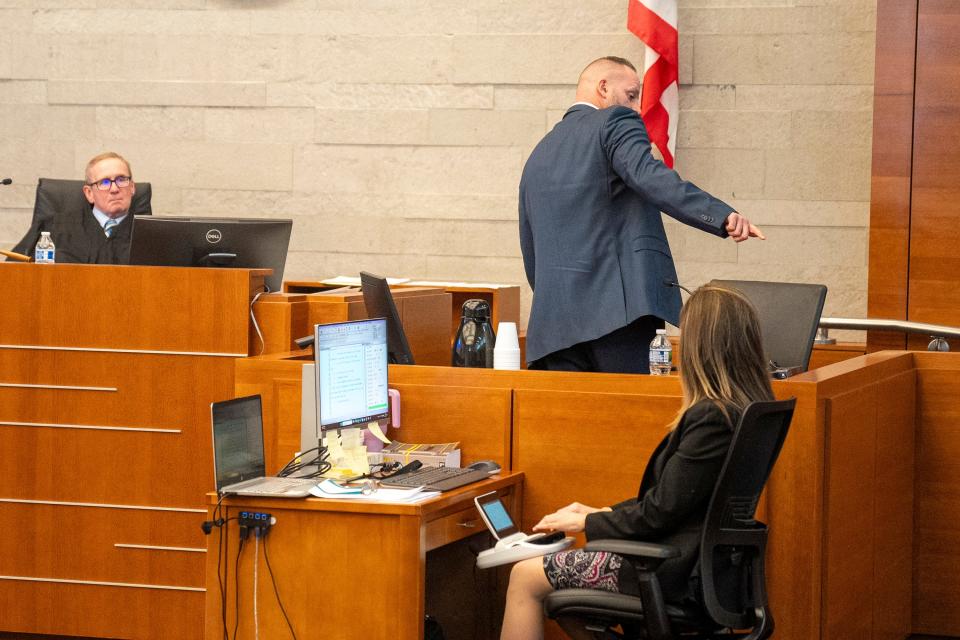
During the trial, some facts came to light or were confirmed, including:
Meade radioed to other officers on his task force when he first saw Goodson that he saw a man with a gun.
Meade put on his bulletproof vest that identified him as a U.S. Marshall while pursuing Goodson.
Meade may not have put on his truck's flashing red and blue lights while pursuing, as a video showed Meade after the shooting going back to his truck and turning those lights on.
Goodson parked facing the wrong direction in front of his grandmother's house, which his family testified was normal for them. Meade testified this appeared strange to him and was one of the factors that made him suspicious.
Meade and another officer testified Goodson appeared to move quickly from his car to the house as if to flee.
Goodson was wearing wireless earbuds when he was shot, which could have been playing music.
A neighbor and another officer testified that they heard Meade give Goodson verbal commands to put the gun down and to show his hands.
Goodson was carrying a bag of Subway sandwiches with him, and his keys were in the side door when he was shot.
Meade shot Goodson six times, five in the back and once in the side, and the bullets went first through the side storm door he was propping open.
Meade used an AR-15-style rifle issued to him that he set to fully automatic. Meade said he pulled his trigger once.
When Goodson was shot, he fell through the side door into the house's kitchen.
Did Casey Goodson Jr. have a gun?
It is undisputed that Goodson, who frequently carried a handgun in a holster and had a concealed carry permit, had the gun on him on Dec. 4, 2020.
Goodson's handgun was found in the kitchen by him after the shooting, either underneath him or within arm's reach. His family and special prosecutors have said his gun was in the holster found on him, but fell out.
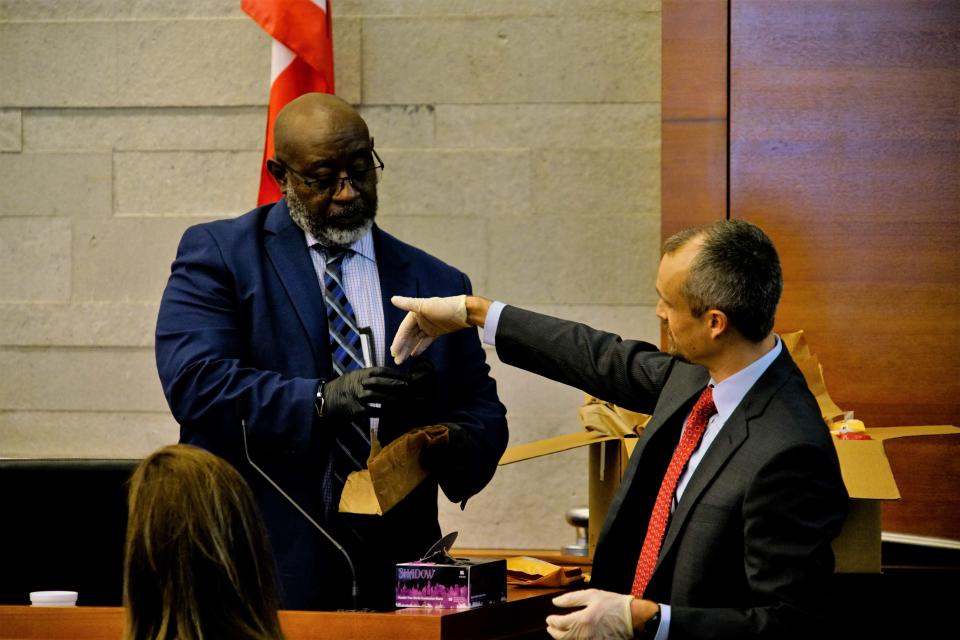
Special prosecutors and Goodson's family dispute Meade's assertions that Goodson pointed the gun twice. Goodson's gun was found with the safety on, special prosecutors said.
What did the prosecution's surprise witness say?
Special prosecutors called a surprise witness who came forward during the second week after watching coverage of the trial by messaging Tamala Payne, Goodson’s mother, and Sean Walton, Payne’s attorney, through social media.
Christopher Corne, an HVAC technician, was in his work van behind Meade's truck when Goodson drove by. Corne testified he saw Casey Goodson Jr. drive by seemingly dancing to music in his car with nothing in his hands. He admitted Meade could have seen something else.
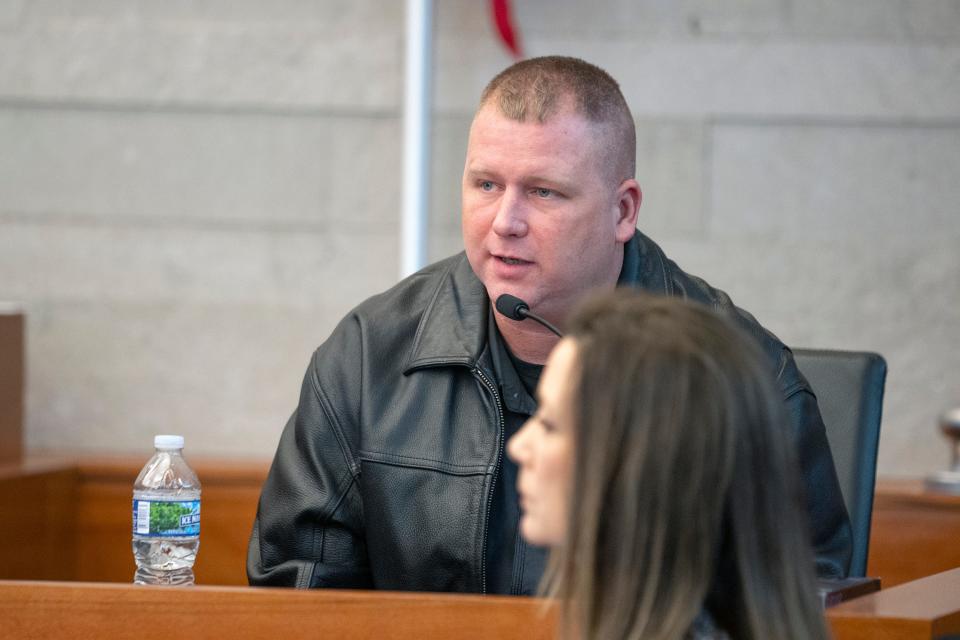
jlaird@dispatch.com
@LairdWrites
This article originally appeared on The Columbus Dispatch: Jason Meade mistrial: Answering your questions and what's next

